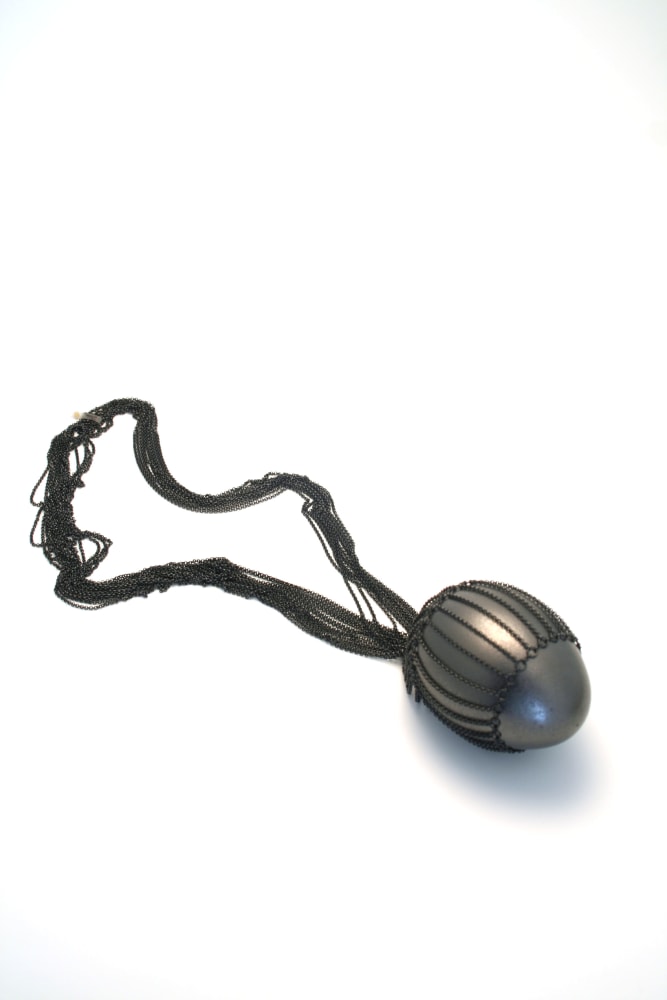
Ruudt Peters, Passio Senouda, 1993, silver, egg, graphite
This collection presentation focuses on the human body. The selection comprises jewelry that literally measure the human body, and pieces whose shape is based on the human body—on sexual characteristics, to be precise. The designs that comment on the notion of “human measurements”, for instance “the ideal woman”, are highly conceptual. Some designs, such as those that compel the body to assume a new shape, are also ambivalent. But what kind of message is jewelry in the form of penises, breasts, nipples or testicles trying to convey? Irony? An invitation? Are the pieces intended to excite or shock? Each culture has its own forms of body adornment, often worn to communicate status (wealth or group affiliation) or sexual availability.
In the late ’60s, young European jewelry designers began to reject the function of jewelry as status symbol (the pearl necklace, for instance). Their alternatives, which took the form of unorthodox shapes and materials, were a visual protest against the established order, parallel to the sexual revolution of the day. In the decades that followed, jewelry designers continued to explore similar themes, particularly jewelry’s relationship to the body, youth culture, and eroticism and sexuality. These trends are also visible in the Stedelijk collection.
With work from Gijs Bakker, Dinie Besems, Václav Cigler, Paul Derrez, Iris Eichenberg, Sally Marsland, Ruudt Peters, Gerd Rothmann and Tarja Tuupanen.